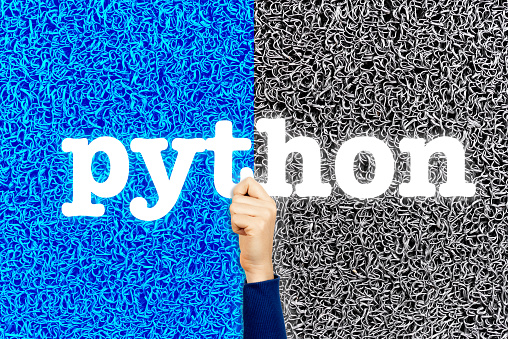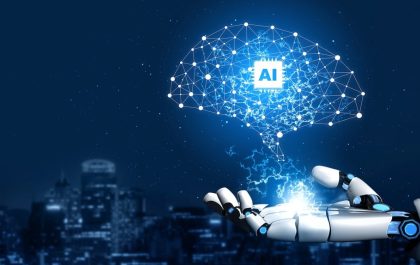The IT world is always evolving, and an excellent example of this is the advent of programming languages. Python courses are one of the most widely used today and the trend continues to rise.
More and more people choose it as their first programming language, and even experienced programmers are switching to it. It has a syntax that allows its programmers to express their problems in fewer lines of code for a fundamental reason.
We’ll see these and other factors later have made Python one of the most widely used programming languages in everything from web applications to data science. The possible uses are very different.
Table of Contents
What is Python?
Python is a general interpreted programming language whose philosophy emphasizes or highlights the readability of code.
Python is a flexible programming language that is easy to read. It is a high-level object-oriented language. Thanks to its simple syntax, it is a very good language to Learn Python Online to program. Python uses modules and packages that promote modularity and code reuse.
It is a multi-paradigm programming language because it supports object-orientation, imperative programming, and, to a lesser extent, functional programming. It is an interpreted language, uses dynamic writing, and is cross-platform.
Why Learn Python?
Python is a very simple language, and therefore an excellent programming language for beginners. But it is ideal not only for beginners but also for advanced programmers. The best part is free. So everyone can program all kinds of things with it. It has an extensive community as it is one of the most widely used programming languages and has many uses.
Main Features
Multiparadigm: Supports imperative programming, object-oriented and functional programming.
Interpreted: The code not compiled into machine language.
Cross-Platform: A Python interpreter can found for the main operating systems: Windows, Linux and Mac OS. Besides, the same code can be reused on each of the platforms.
Dynamically Typed: That is, the same variable can take values of different types.
What can I do with Python? Main Uses of Python

Python is a general-purpose programming language, so you can do a lot with Python. From creating machine learning models to more advanced artificial intelligence projects. You can also create web applications or scripts to automate processes.
For example, many large companies like Google use Python. NASA uses Python to program its space machines and equipment. So when giants like Google and NASA use Python, you can imagine the meaning of that language.
You can do almost anything with Python. That is why it is a very useful programming language for learning.
Python has been the buzzword in every programmer’s vocabulary for several years, but why? To answer this question, let’s start at the beginning: What is Python?
Python is an object-oriented open source programming language that is very simple and easy to understand. It has a simple syntax with an extensive library of tools, making Python a unique programming language.
One of the main benefits of learning Python is creating easy-to-read code that saves time and resources and makes it easy to understand and implement.
These and other factors that we will see later have made Python one of the most widely used programming languages. From web applications to artificial intelligence, the uses for Python are endless.
These are the primary industries that use this programming language:
Python in Artificial Intelligence (AI):
Python is a fast, scalable, robust, and open-source writing language. These advantages make Python a perfect ally for Artificial Intelligence.
You can capture complex ideas in just a few lines of code, which other languages cannot.
Python in Big Data:
Python is widely used to analyze data and extract useful information for businesses.
In addition to its simplicity, which is a great benefit, Python has data processing libraries like ‘Pydoop’, which help professionals. You can write MapReduce code in Python and process the data in the cluster.
Python in Data Science:
Since the introduction of Python’s numerical engines like ‘Pandas’ and ‘NumPy’, researchers have switched from MATLAB to Python.
Python processes table, matrix and statistical data and even visualizes them with standard libraries like “Matplotlib” and “Seaborn”.
Python in Test Frameworks:
Testing is another activity that has moved to Python.
Python is great for validating an idea or product because it has many built-in frameworks to help debug your code and provide fast execution and workflows.
Test tools such as “Unittest”, “Pytest” and “Nose Test” make testing easier. Python also supports cross-platform and cross-browser tests with various frameworks such as “PyTest” and “Robot”.
The test, which is usually one of the most challenging tasks, becomes much easier and faster.
Python in Web Development:
With Python, you can do so much more with fewer lines of code to more efficiently prototype.
Python’s Django framework is a bonus for all developers, as it can use to create highly secure and dynamic web applications.
Conclusion:
Many programming languages facilitate the development of the web or other environments. Over time, many developers have switched to Python.
Python is a language that adapts to the needs of today’s platforms and to most types of goals you want to achieve. In many cases, they can combine to produce great results for your projects.
If you want to learn more about this language that is revolutionizing the technology market, offer Python courses and tutorials on multiple websites and platforms. We recommend this “Learn Python from H2K Infosys” course.
TheITbase
Related posts
Hot Topics
Maximizing Efficiency: Essential Tactics for Quick File Uploads on the Web
Would you like to have your patience tested on a random day for no reason? Of course not. The same…
AI in SEO: Revolutionizing Search Engine Optimization with Artificial Intelligence
Artificial Intelligence (AI) has emerged as a digital marketing game-changer, particularly in the realm of Search Engine Optimization (SEO). What…



